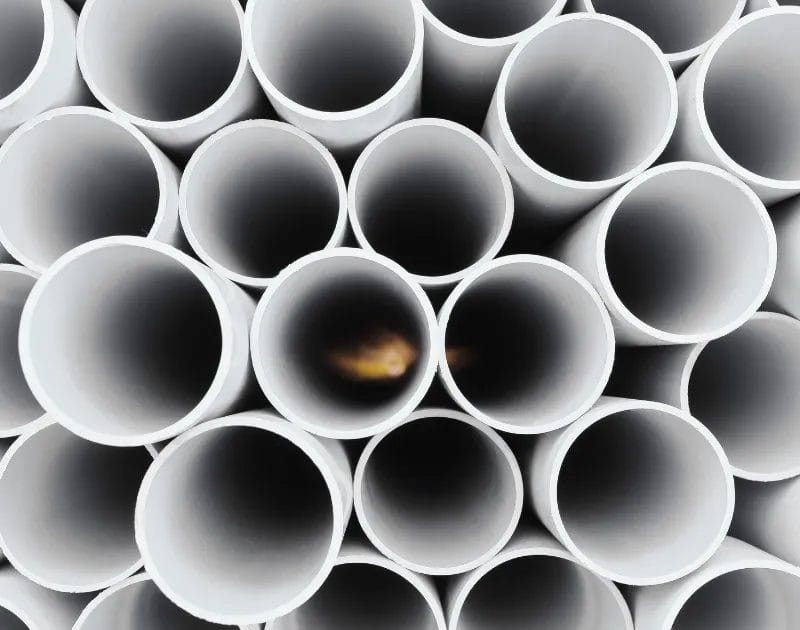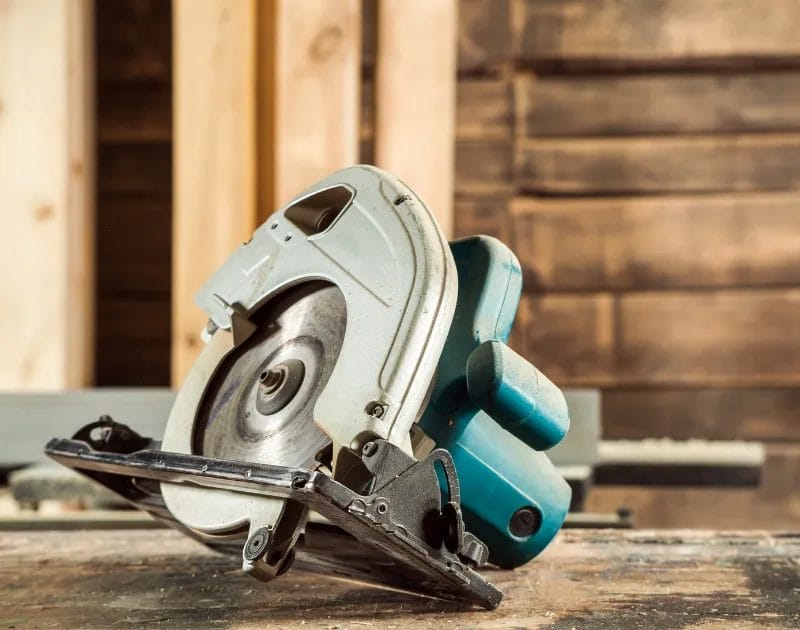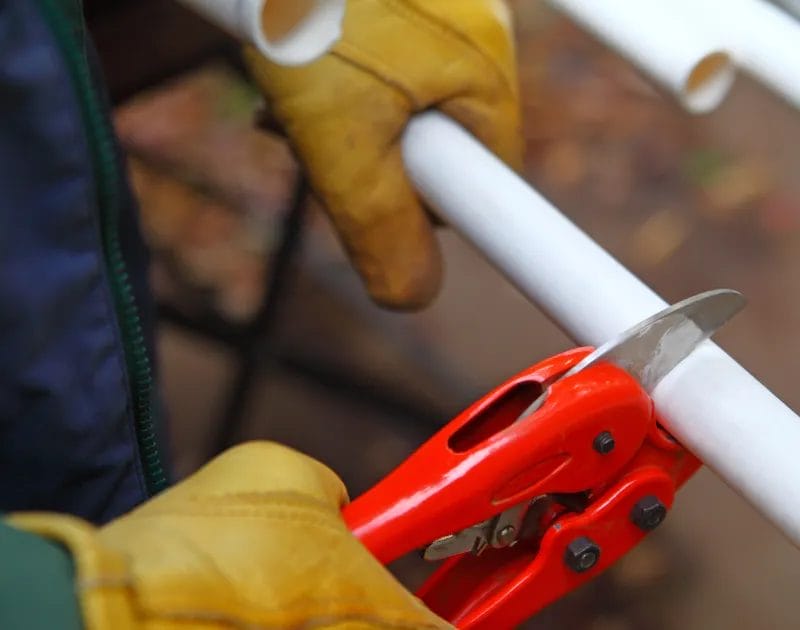If you are doing some home DIY related to plumbing, then you might need to cut some PVC pipes, and not everyone has special PVC cutters for this job, so sometimes you will just have to make use of the tools you have.
Although it is not the most common choice, you can use a circular saw to cut PVC piping, most people use a hacksaw or a mitre saw for this task but it can be achieved with other tools too as long as the PVC pipe is clamped into position.
In our guide below which tools you can use for cutting PVC pipe, how to cut PVC pipe with a circular saw, how to even the edges of PVC piping after cutting and some safety tips for using a circular saw to cut PVC piping.
Let’s get into it!
What Tools Can Cut PVC Piping?
You can use a variety of different tools to cut PVC pipes, some are specialist cutting tools and others are standard types of tools for DIY.
We have listed the main ones down below.
Miter Saw
One of the most popular types of tool for cutting PVC piping with are power miter saws, these are excellent types of tools for creating detailed small cuts and can be used with a miter box for extra stability and accuracy when cutting the pipe wall.
Handsaw
If you have no other blade tools on hand, you can simply cut the plastic PVC pipe with a handsaw, the process might take a little time but will eventually cut through, just make sure to keep the lengths of PVC pipe steady over a bucket when cutting.
Hacksaw
Hacksaws are simple to cut quantities of PVC pipe with, all you have to do is clamp the entire pipe down and saw through the pipe surface with the teeth of the blade.
PVC Cutters
PVC pipe cutters come in scissor style as well as ratcheting style, scissor-style pipe cutter types are much better for small size pipes while a ratcheting pipe cutter is suitable for larger pipes.
The only thing you need for cutting with a ratchet-style pipe is some decent hand power.
String
Yes, you can even use string to cut a PVC pipe. All you have to do is start to make a cut with your utility life and use your nylon string back and forth to cut the pipe. This is not the most precise way for cutting the entire pipe but it can work if you have some time on your hands.
Sawzall
Small reciprocating saws can be used for cutting through a curved pipe or straight pipe, just make sure to put an even amount of pressure on the saw when cutting through.
How To Cut PVC Piping With a Circular Saw
Cutting PVC piping with a circular saw doesn’t have to be hard, all you need is a stable workpiece and the right kind of circular saw blade for use as plastic pipe cutters.
We will list the basic steps below for cutting the PVC pipe process.
Step One – Keep The PVC Pipe Clamped
First of all, make sure that your pieces of pipe are clamped in a vice tool with two jaw clamps so as they can stay stable while you are cutting through with the circular saw. Make sure it is a few inches from the cutout, this also helps for safety reasons as it stops the pipe from moving while you are cutting.
Step Two – Mark The Cutting Line
Accurately measure where you want to cut that pipe into segments with some chalk so as you can know where to cut through from the pipe clamp. Make sure these markings are correct as they can’t be reversed once cut!
Step Three – Use The Right Blade
Now install a plastic cutting blade onto your circular saw, to do this you simply have to loosen the arbor nut on your saw, then refit your new blade making sure that the teeth of the blade are facing the direction that the circular saw is rotating.
Step Four – Cut Through The Pipe
Place the circular saw where the chalk line is on the curved pipe and use your other hand to press down on top of the saw, concentrate on keeping your saw straight and positioned right so as it doesn’t move away from the marked line, go at a slow and steady pace until it cuts through the whole ABS pipe.
How To Deburr PVC Piping After Cutting With a Circular Saw
After cutting your ABS pipe with a circular saw you might need to smooth the rough edges of your ABS drain pipe with a deburring tool.
We’ve listed how to do this below.
- Step one – Wear glasses and safety gloves to hold the end of the pipe and insert paper towels into the inside of the pipe to stop residue from falling inside.
- Step two – Use a utility knife around the inside of the pipe to get rid of burrs going slowly around the inner edge of the pipe or if you have a deburring tool then insert the inner reamer end into the PVC pipe and do 2-3 turns.
- Step three – Now take some sandpaper and smooth the inner side of the pipe that has been cut with power tools, get rid of all the burrs and repeat for the outer edge of the pipe too with the deburring tool if needed.
Safety Tips For Cutting PVC Piping
Circular saws are a high power cutting tool and should be operated with precautions for your safety when cutting PVC pipes.
We’ve listed a few essential safety tips to remember for when you are using one of these tools down below.
- Wear safety equipment – When cutting PVC pipe products you have to make sure you are wearing some gloves and safety protection goggles to protect yourself from the dust which is created when cutting through the plastic.
- Make sure the pipe is properly clamped – Always ensure that your pipe is properly clamped into your device before you start cutting, slipping out the clamp while you cut could be a huge safety hazard.
- Lubricate the pipe beforehand – One good way to reduce the dust created from your plumbing grade PVC pipe is to lubricate it beforehand. You can do this with a little oil to reduce the amount of dust created.
- Use the right tool – Never use a tool like a regular wood blade saw, band saw or a table saw to cut PVC pipe with, these saws will either catch on the plastic material and snag becoming a safety concern or they will not cut through the pipe at all like standard wood saws.
- Hold it properly – Learn how to hold your circular saw stable, whether you use a right-handed or a left-handed model.
- Set the right depth – Always set your circular saw depth to the diameters of the PVC pipe that you are cutting, make sure that there is no more than 1/4-inch of the saw blade protruding underneath the pipe.
- Inspect the saw beforehand – Check your saw for any damages on the machine or blade before you start cutting to avoid any accidents.
Frequently Asked Questions About Cutting PVC Piping
What can I cut a smaller-diameter PVC pipe with?
For cutting a smaller-diameter PVC pipe you can use scissor-style plastic pipe cutters for the job as they do not require too much power.
How much is a de-burring tool?
A deburring tool is pretty affordable and costs no more than £15, you can always use sandpaper instead too.
What inexpensive tools can I use for cutting PVC pipes?
You can use pipe cutters or even a standard handsaw for cutting PVC pipes, both are very affordable and easy to use, they just might not have as much accuracy.
How do I use a miter box for cutting PVC pipes?
When using miter saws for cutting PVC piping you can use a miter box to cut with for better accuracy, the miter box slots will provide places for you to cut on the pipes allowing you to cut straight.
Last Words
Overall, a circular saw can cut PVC piping just like miters saws and a ratcheting-style pipe cutter as long as the piping is clamped and marked properly beforehand for extra stability when sawing. Always make sure you are wearing protective equipment when operating the saw and deburr the edges at the end for a smooth finish.




